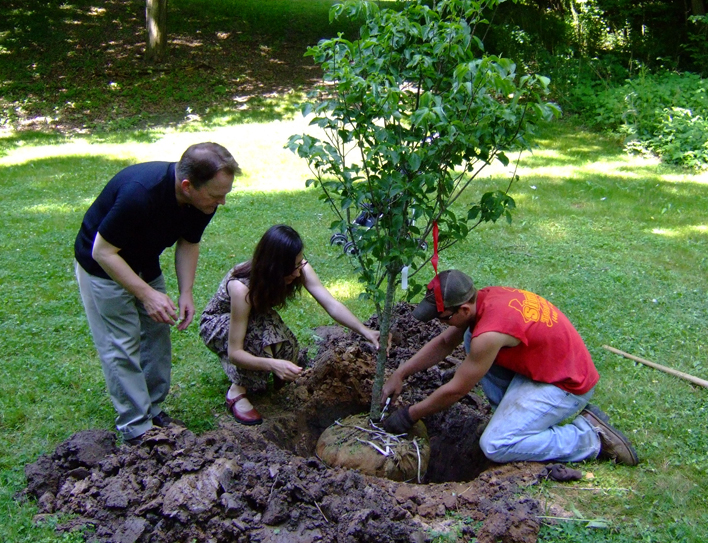When you transplant a tree or shrubs you will undoubtedly find that while this process looks easy from the outside, it’s actually more complicated than you would anticipate. In fact, many transplants become damaged or even die because of incorrect removal or installation.
But if you are going to give a complete makeover to a landscape project, then you will have to move already existing plants, whether to change its location or eliminate it entirely.
If you want to make sure that when you transplant a tree it is done properly, these are the steps you are advised to take to ensure it has the best chance as surviving the stressful journey.
- Remember that location is king. Before you transplant a tree, find out if it prefers sun or shade, as well as its watering and spacing requirements. For example, do not place a plant that needs a consistent water drip adjacent to one that desires dry conditions:
- Dig the new hole prior to digging up the shrub or tree. After digging up the plant, you must find a home for the roots because the longer those roots go without a home, the lower your chances of successfully transplanting a shrub or tree.
- Dig around the plant so you can measure or estimate the width and depth of the roots, as the width of the hole should be twice the size, and the depth should be reasonably shallow in order to avoid puddling and eventual rotting.
- Do not break up the soil after reaching the bottom of the hole. You would likely think that this would be beneficial to the tree or shrub, but instead, it could cause your plant to sink and rot as a result
- Begin digging out the tree or shrub, but do not start at the base. Instead, begin digging around the perimeter, a few feet from the base. Get an idea of where the main mass of roots is and think about how heavy the plant will be as you transplant it. You will likely need to enlist the assistance of others.
- Keep as much of the root intact as you possibly can, but note that the larger the tree is, the more difficult this task becomes. Generally you will need to cut through some roots if your plant is a mature one. You will want to make absolutely certain that your cut is performed properly, as this will impact the survival of the tree post transplantation.
- Remove soil from the sides of the plant and then loosen it with a shovel. Once you get the tree or shrub loose enough, lay out a tarp and gently place the tree or shrub on that tarp.
- Drag the plant over to the new hole by gently dragging it over on the tarp. Slide it into the hole as gingerly as possible and position it properly. Shovel some of the removed soil back into the hole and then fill it in completely. Do everything possible to tamp the tree down and eliminate all air pockets and then water it as normal.
- Build up a mound of soil around the transplanted tree or shrub, creating a fort of sorts. This will go a long way toward ensuring that you are able to properly water the transplanted tree going forward.
- Spread a layer of mulch a few inches around the new transplant. However, be sure to keep it away from the base of the tree. This ensures it will get the proper nutrient and water supply.
- It absolutely cannot be emphasized enough just how important it is to properly water the transplanted tree or shrub. If this is not carried out correctly, whether that means under watering or over watering, your plant will not likely survive.
- Most trees should be transplanted in late winter or early spring, although fall is also an acceptable time to for transplantation. It is not a good idea to transplant trees in the summer or winter as the conditions are not ideal. Summertime tree transplanting could be complicated by extreme heat, and wintertime tree transplanting could be harmed by the frigid temperatures and potential ice and snow hazards.
- The length of a tree transplanting job varies depending on several different factors. Digging out a tree is labor that is incredibly hard on the body, so the amount of time it will take you varies based on your physical capabilities and any assistance received.
One technique sometimes used to facilitate transplanting large trees is root pruning. Root pruning is the process of cutting back long roots to embolden a tree or shrub to form new roots closer to the trunk, which is something often performed on potted plants as well.
Many experts believe root pruning is crucial when transplanting established trees and shrubs. To start root pruning, mark a circle on the soil around the tree you will be moving, with the size of the tree determining the size of the circle. Then, carefully tie the lower branches up with cord and dig a trench in the ground around the outside of the circle. After you dig down a sufficient amount, use extracted soil to fill the trench back in. Finally, re-dig the trench and remove the ball of the root.
Featured Image

